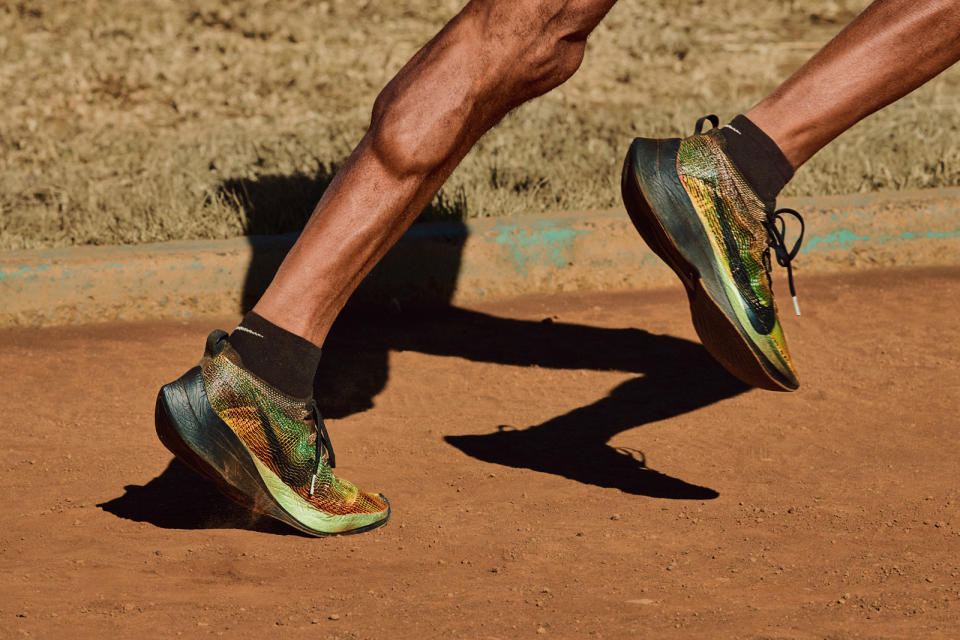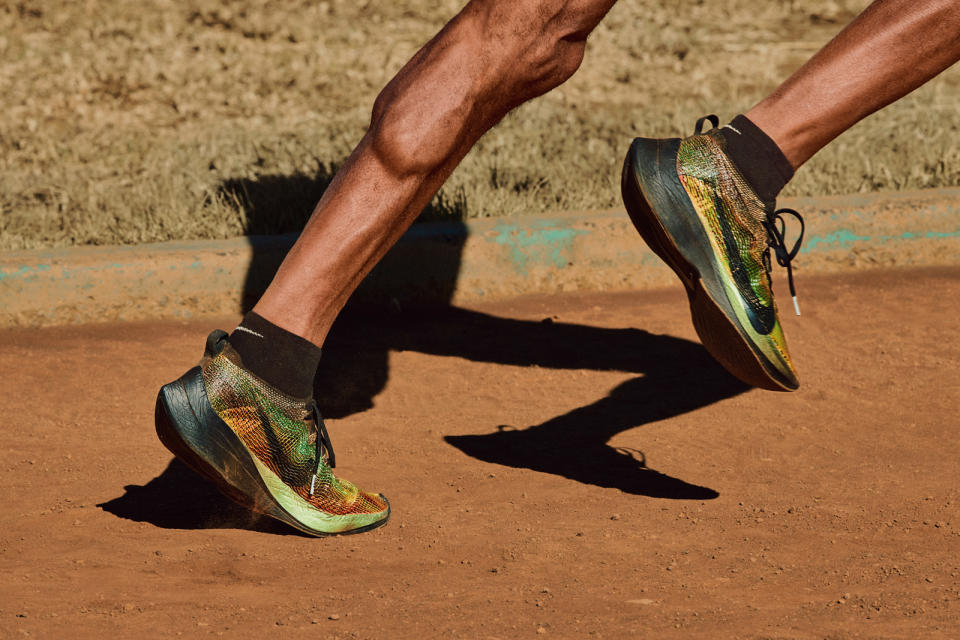Nike's 3D-printed textiles make running shoes even lighter
Flyprint could give distance runners the edge they need.
Nike's use of 3D printing to craft ever-better performance shoes has reached its next logical level. The company has introduced Flyprint, the first 3D-printed textile upper for performance footwear. The material is ultimately a TPU filament melted and applied in layers, but the geometry is the key: Nike is using athlete data (such as that from distance runner Eliud Kipchoge) to determine the composition of the textiles. The result is a high-performance shoe upper that can be rapidly customized for specific regions and individual runners.
Regardless of the runner, Flyprint promises to be both lighter and more breathable than previous textiles. The fused nature of 3D printing also eliminates the frictional resistance that comes with conventional fabric. There can be very specific benefits for individual athletes, however. The first implementation, the Zoom Vaporfly Elite Flyprint, is destined for Kipchoge and promises to not only be 0.38oz lighter (a big difference in this category), but more resistant to the water absorption that can bog you down during a run.
You'll first see the technology in action when Kipchoge uses an Elite Flyprint pair in a London marathon on April 22nd. However, you will have the chance to get a hold of the shoes yourself... if you're lucky. Nike is selling a "limited run" of the Flyprint shoes in London through the Nike App on the marathon weekend, so you'll need to act fast (and possibly book a trip) if you have to be the envy of your fellow hypebeasts. Flyprint will no doubt be used elsewhere -- it's just a question of when it's available to the masses.


